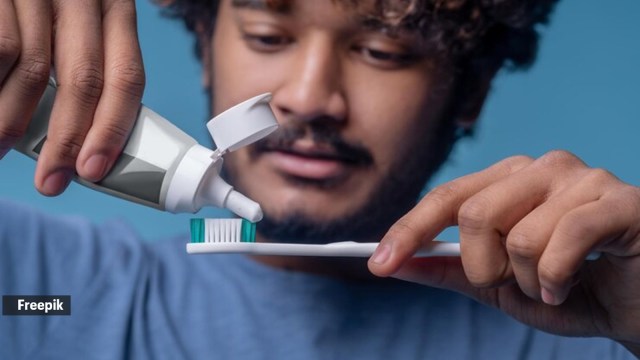📣 For more lifestyle news, click here to join our WhatsApp Channel and also follow us on Instagram
Can the viral purple toothpaste lead to brighter, whiter smiles? Dentists weigh in
Dentists warn against replacing traditional toothpaste with purple toothpaste, as it does not remove bacterial plaque and may not contain safe ingredients.
 (Source: Freepik)
(Source: Freepik)If you’re familiar with the concept of purple shampoo, this won’t come as a shocker! The internet has been abuzz with purple toothpaste, claiming to whiten yellow teeth and spread happy smiles all around. What’s got us curious, is to find out how these toothpastes work and whether they are safe to use in the long run.
Indianexpress.com spoke to dentists and got more clarity on this topic.
Dr Aditya Sharma, dentist, said, “It doesn’t whiten the teeth as such, but just uses the colour theory, which ends up hiding the yellow hue and gives the appearance of much whiter teeth. While it removes stains to a lesser extent, purple toothpaste work better as colour correctors compared to teeth whitening agents.”
He mentioned that these pastes have a temporary effect only.
How do they work?
“Unlike traditional ones, purple toothpaste contains V34 colour corrector serum which is the main differentiator. Much like what is used in purple hair toners,” said Dr Kamlesh Kothari, cosmetic dentist and maxillofacial surgeon, Kolkata.
According to him, the toothpaste releases purple micro-particles (Red 33 and Blue 1 dyes) onto your teeth, which when mixed with yellow stains produces a white colour.
While it does not change the internal colour of teeth, it does remove surface stains and enhance your smile for a few hours. This colour correction is akin to makeup for your teeth, not a substitute for your daily oral hygiene routine, Kothari further explained.
Can they be used regularly?
Dr Niyati Arora BDS, MDS (prosthodontist) at Krown Hub Dental Clinic, Pitampura, said that oral care solutions containing purple dyes can frequently be used regularly, but it’s crucial to adhere to the unique directions that come with each product.
“More concentrated treatments like whitening gels should not be used daily, but regular toothpaste and mouthwash can usually be used twice a day. It is always better to consult your dentist before switching oral care products to ensure patient-specific guidance,” she said.
 (Source: Freepik)
(Source: Freepik)
Are they safe in the long run?
“Purple dye-based oral care products are generally considered safe for temporary cosmetic use as they don’t have any abrasives or any harmful chemicals but caution must be exercised while using such products. Some individuals may have sensitivities or allergies to certain dyes and in all such cases, a dentist must be consulted immediately,” said Arora.
Kothari said that purple toothpaste is not currently reviewed by the American Dental Association (ADA) for safety and effectiveness. Dentists warn that purple toothpaste should not replace traditional toothpaste, as it does not remove bacterial plaque and may not contain safe ingredients.
📣 For more lifestyle news, click here to join our WhatsApp Channel and also follow us on Instagram



- 01
- 02
- 03
- 04
- 05
























